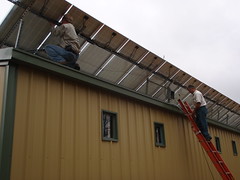“Forests Dominate Georgia’s Land Use”
 That’s the title of slide 10 of 21 in
Center of Innovation – Energy (CIE)
by Jill Stuckey, Director.
Actually, massively pesticided planted pines dominate south Georgia’s land use;
not the same as actual forests with species diversity and diverse ages of trees.
The same CIE slide equates
That’s the title of slide 10 of 21 in
Center of Innovation – Energy (CIE)
by Jill Stuckey, Director.
Actually, massively pesticided planted pines dominate south Georgia’s land use;
not the same as actual forests with species diversity and diverse ages of trees.
The same CIE slide equates
Georgia Forestry = Biomass EnergyThat is what the state government seems to want it to be.
Back on slide 9, solar is defined as a southwestern regional energy source; nevermind that the solar map on that page shows Georgia with the same insolation as most of Texas (more on that later). And wind is defined as a central U.S. regional strength, nevermind that even Georgia Power has started exploring the possibility of wind off the Georgia coast.
I get it that Georgia has trees and forestry is a big industry in Georgia. I’m a tree farmer myself. I’d love to be convinced that biomass from trees is one good way to go. But at what costs? And compared to what? Continue reading







